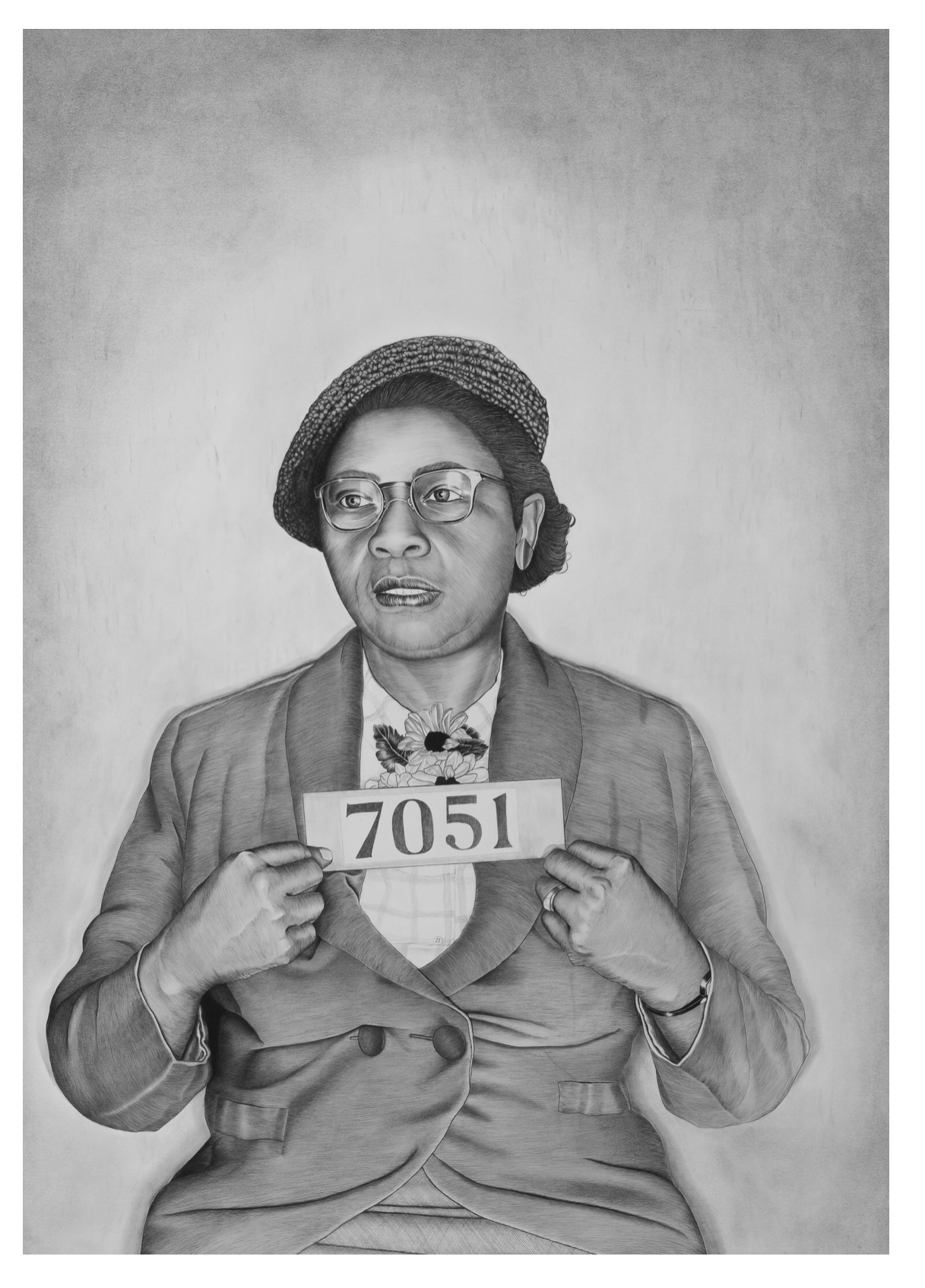Cultural Armor & Lava Thomas
Clothing is our Cultural Armor, something that I have believed for years. What we choose to wear is usually more than just an aesthetic choice whether we realize it or not. Clothing comforts us, encourages us, ushers us, and can even distract us—but the choice of a garment goes way beyond the simple of idea of ‘throwing something on’.
I recently spent the morning with the talented artist, Lava Thomas, to learn more about her Mugshot Portraits: Women of the Montgomery Bus Boycott exhibit. My good friend & Lava Thomas collector, Pamela Miller Hornik, invited me to her home in Palo Alto along with the team from the Headland’s Center for the Arts, where Lava had been a Resident. It was during her residency that Lava created the Mugshot Portrait collection of drawings.
Lava’s painstaking attention to detail within her conte & graphite pencil drawings had me captivated. Lava chose to work in pencil to illustrate the delicate nature of history and played with the idea of how easily stories can be erased.
She recreated the mugshots in life-size scale, calling greater attention to the purposeful gaze and elegance of the dress amongst each of the women. This magnification of the subjects is in direct relationship to their impact on the Civil Rights movement.
Lava’s work is an acknowledgement of the boldness of the women’s actions and a powerful way of honoring their courage and strength.
In wearing, what they referred to as their “Sunday Best”, the women chose to dress in a manner evocative of the seriousness and importance of their work. The ‘proper’ presentation forced people to move beyond the stereotypes of African Americans at that time—they dressed to show their belonging and deserved place in the majority.
Lava Thomas, Pamela Miller Hornik & Teddy.
The Women of the Montgomery Bus Boycott, by Lava Thomas—from left, Cora McHaney; Rosa Parks & Mrs. A. W. West, Senior. Conte pencil & graphite on paper.
At the time, Alabama had an an anti-boycott law, so any garment carrying a message of assertion would have compromised their efforts. Wearing their “Sunday best” allowed them to portray their personal dignity & place within society. Their dress showed these women as just another citizen riding the bus, trying to get from here to there.
Clearly, their ‘uniform’ was one tiny portion of the Women of the Montgomery Bus Boycott’s tremendous importance. Their vision, integrity, tenacity and belief in their own value was what reshaped the culture at that time. But I cannot look away from the idea that this ‘uniform’ was purposefully put in play to allow them to gain access to the greater conversation.
I love every detail— halo hats with netting; perfectly coiffed hair; pearl earrings; overcoats in bold proportions; the jackets with high roll lines & smaller collars; covered buttons & pockets crafted into style lines. Certainly, because of the time, they would have surely worn skirts although, that is not clearly evident from these sketches. Their clothing choices gave their gaze & actions more strength & conviction. ‘Cultural Armor” allowed them a place at the table, to command respect and begin the long road toward equality in their right to take a seat at the front of the bus.
These bold, fearless women broke ground in their pursuit of civil liberties in Montgomery, Alabama. Their refusal to ‘move to the back of the bus’ resulted in their arrests and the bus boycott that followed. From this boycott, the Montgomery Improvement Association was borne & Martin Luther King Jr. was named the President. The rest, well, its history—or herstory.






